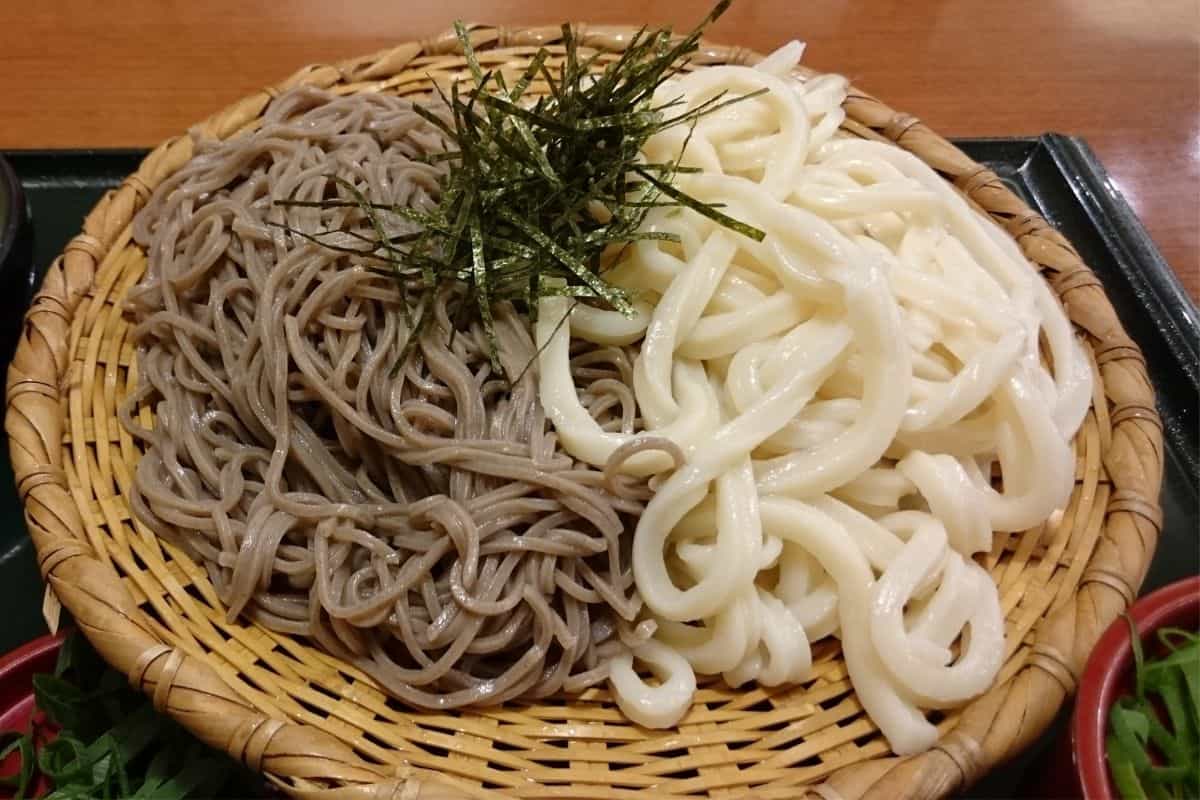Inside convenient stores, noodle shops, and even street food vendors in Japan sprawl the cuisine landscape. Among the tasty dishes sold are the two most popular noodles consumed: soba and udon. There are others as well, but these two are primary in Japanese cuisine.
Udon noodles are shiny white, spherical, and thick once cooked, whereas soba noodles are brown, flat, and thin. Udon noodles have a distinct flavor and texture. They have a milder flavor and a thicker, chewier texture than the buckwheat udon since they are made with wheat flour.
The basic differences between soba and udon noodles are taste, shape, size, and the flour used to make them. Soba noodles come from buckwheat flour along with being thin and long. Udon, on the other hand, comprises wheat flour. These are flat and fluffy. The type of water used is also a factor.
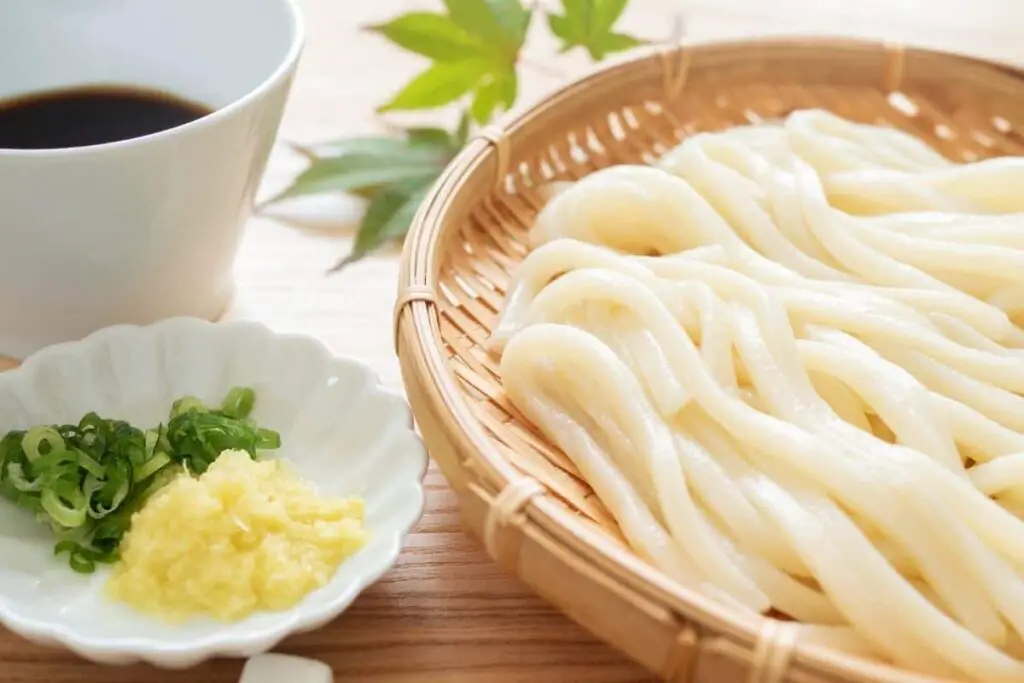
The Origin Story of Soba and Udon Noodles
Both of these noodles come from a temple in Fukuoka, one of Japan’s oldest and most ancient areas. They originated at the Joten-ji Temple in Hakata on Kyushu, the country’s 4th largest island.
Here, there’s a stone monument claiming birthplace to the development of udon and soba noodles.
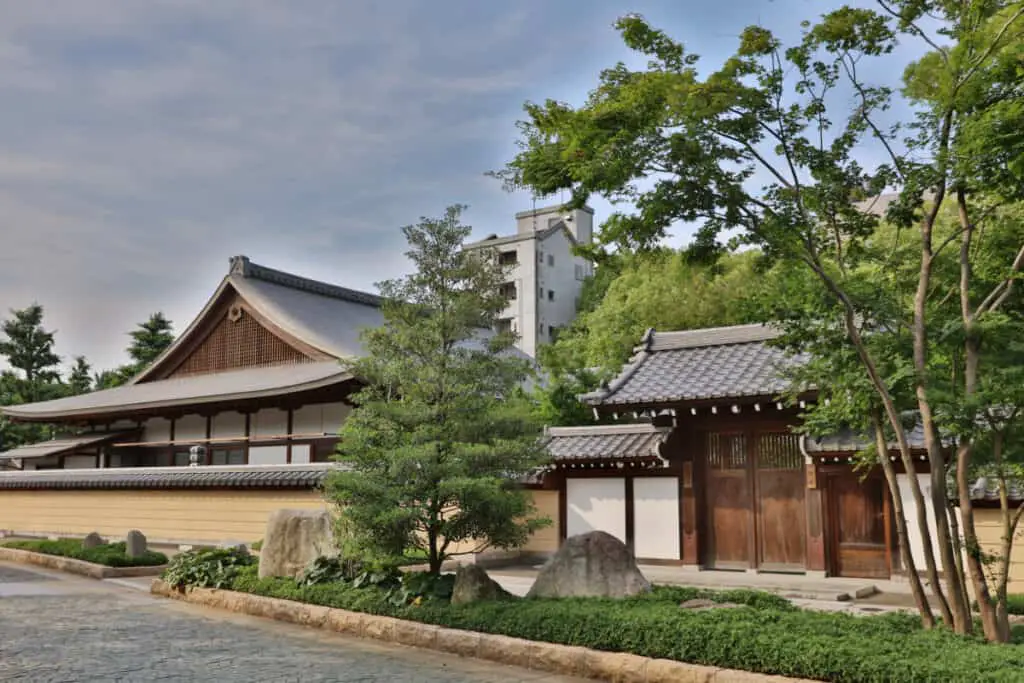
In 1235, before helping to found the temple, Enni-Ben-en traveled to China. He mastered Zen Buddhism and returned to Japan in 1241.
He also brought home a variety of cultural gifts and produced the method for making soba and udon noodles. These are the same techniques the Japanese use today.
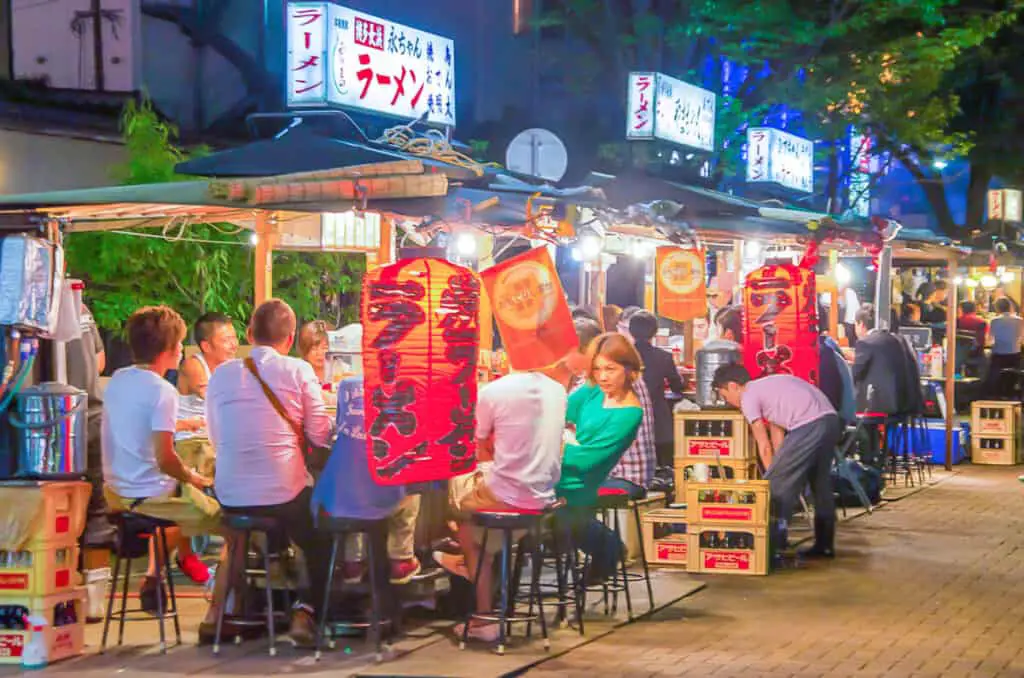
But because these two noodles come from this famed area, the ultimate place to try them is in the Fukuoka prefecture. The streets are lined with vendors and restaurants serving them in a variety of ways that not only come from Japan but also China and Korea.
Soba Noodles
The iconic buckwheat noodle famous in many Japanese dishes is soba. People enjoy these all year long in Japan. These look more like spaghetti noodles and appear light to dark brownish mousy gray.
It has a nutty and strong taste with a firm texture and flat appearance.
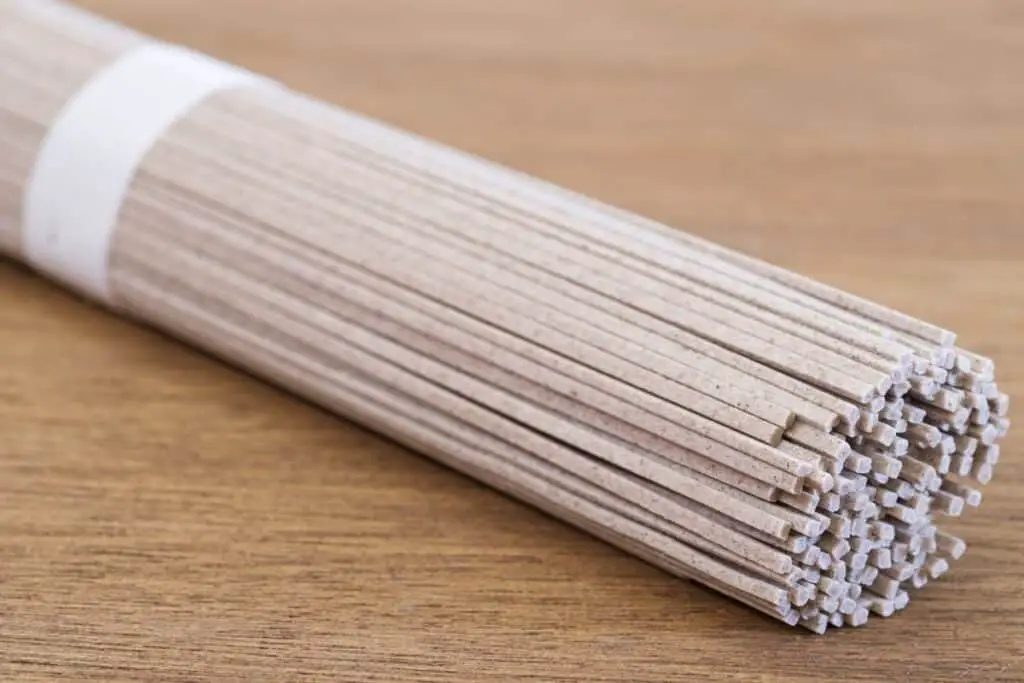
Types of Dishes And How to Eat Soba
Soba noodles appear in hot or cold soups, salads, and dipping sauces. One particular soup, called soba-tsuyu or soba-jiru, incorporates soy sauce, dashi (soup stock from seaweed and bonito flakes), and mirin (sweet rice wine). It truly has an amazing and indescribable texture.
In summer, once the noodles finish cooking, the chef will quickly chill in ice water and serve with a cold broth, called tsuyu. This is a dipping sauce set on the side. The broth is a little salty and topped with chopped green onion or mixed with a bit of wasabi for a spicy taste.
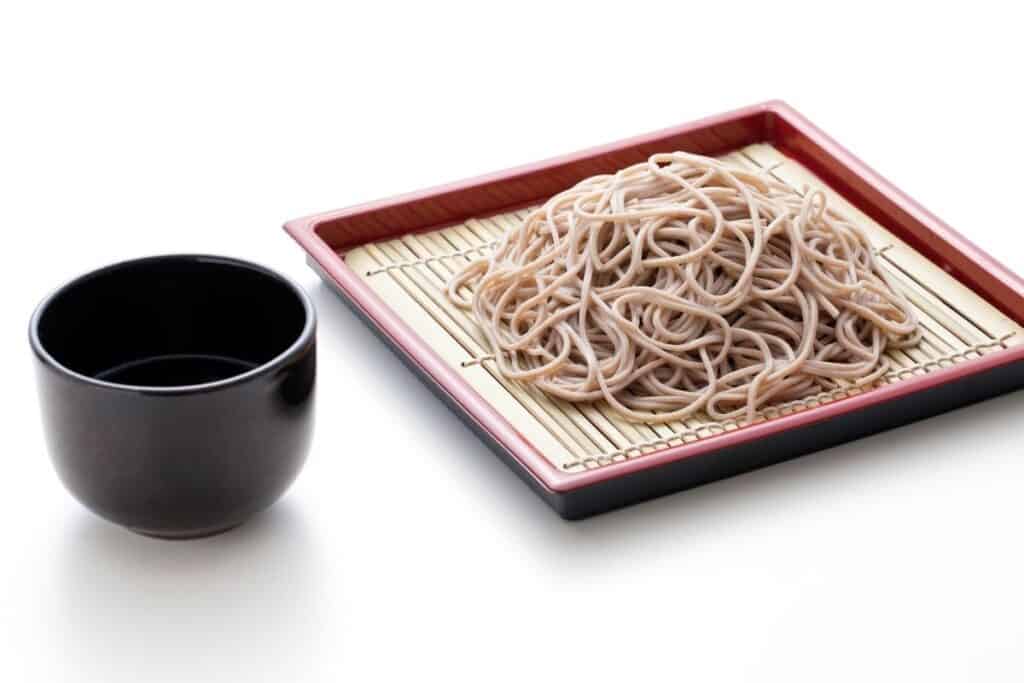
In winter, hot soba noodles are Japanese comfort food. These come in a soup and are not for dipping. Sheets of fried tofu also called abura-age, and wild mushrooms come atop the dish.
Ingredients
Buckwheat is a superfood that allows for energy restoration within the body. This makes soba noodles incredibly healthy and safe enough for those with gluten allergies to eat.
But, gluten-conscious diners should first check with the restaurant or read the ingredient label for store-purchased noodles as there sometimes may also be wheat or flour included.
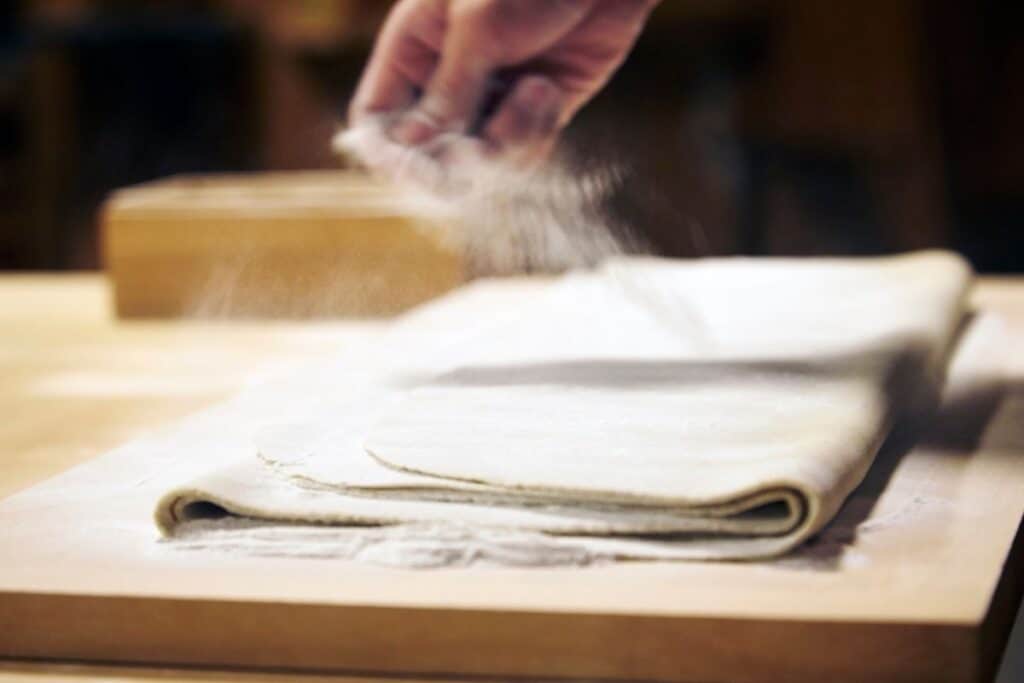
Food Allergies and Allergic Reactions
There are some recipes that comprise a little regular wheat flour. While this helps them bind better together and provide for a softer noodle, it can make them off-limits for those with gluten intolerance.
What’s more, with soba noodles, some people experience allergic reactions after eating them. Symptoms include mouth pain or swelling along with nausea and diarrhea.
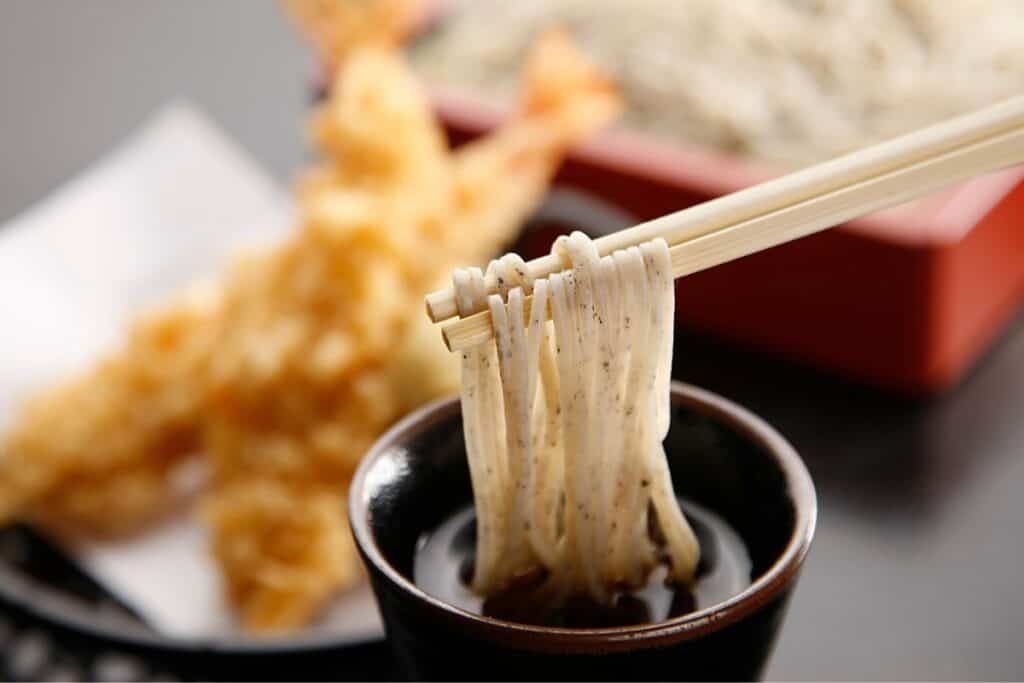
These are signs of anaphylactic shock. If you notice any sort of burning sensation the moment you eat soba noodles, stop and drink water although this reaction is extremely rare.
Therefore, even though these are gluten-free, they can be caustic to digestive systems that aren’t used to buckwheat as a normal part of their diet. When any symptoms begin to appear, seek medical attention as soon as possible.
Purchasing
Soba noodles are often sold as a dried product. But, these are so simple and easy to make, anyone can craft them at home. It’s just buckwheat flour and water kneaded into a thin dough. The dough is cut into thin one to two-centimeter strips which are then boiled.
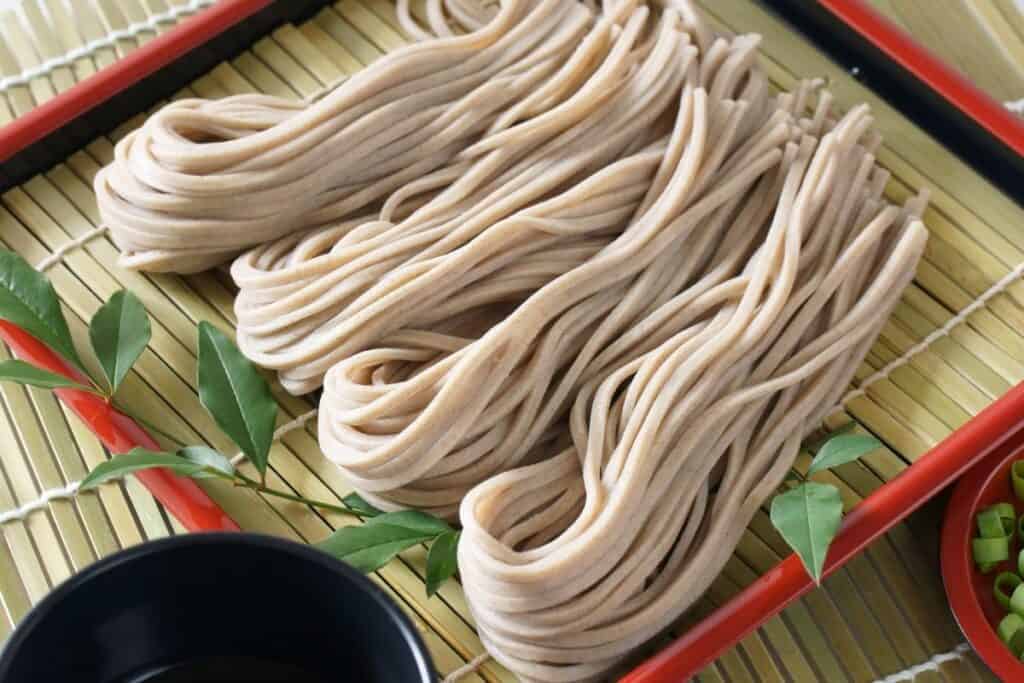
Best Region in Japan
While you can find soba noodles almost anywhere in Japan, Nagano is the place for the best soba. The area comprises nutrient-rich volcanic ash in the soil.
Combined with the higher elevation, it’s the perfect environment for growing buckwheat. In Nagano, they call their soba noodle dish shinshu and have a requirement of containing at least 40% buckwheat flour.
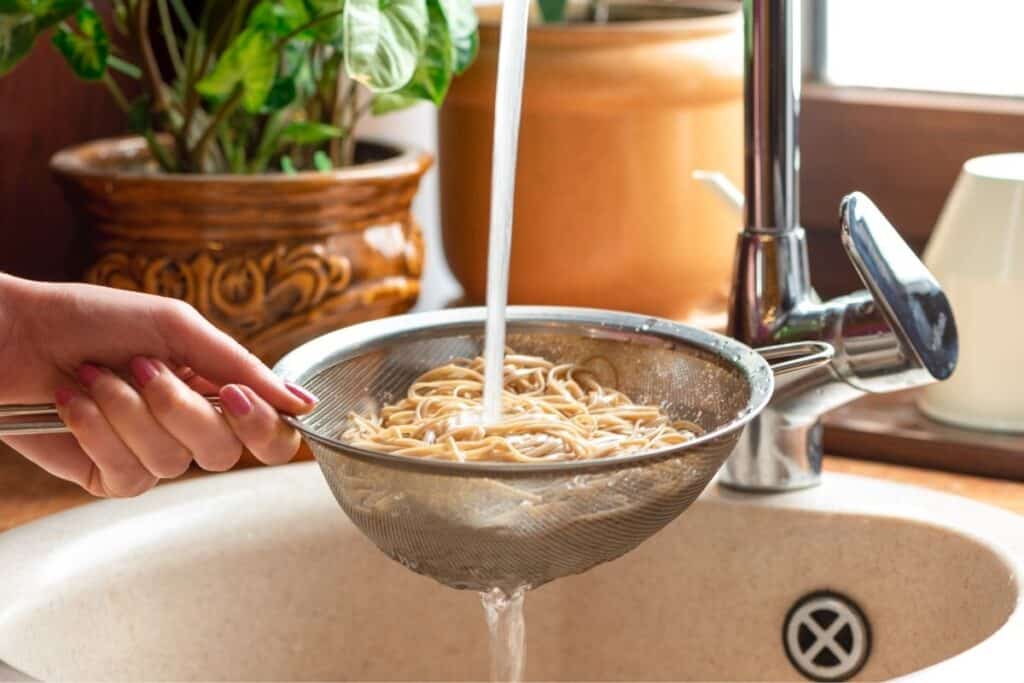
Udon Noodles
Like soba, udon noodles are a beloved staple among the Japanese and appear as pure, glossy white. They’re thick with a spongy, chewy texture and have a much milder flavor than soba noodles. Whereas soba provides its own unique flavor, udon is a vehicle for flavor delivery.
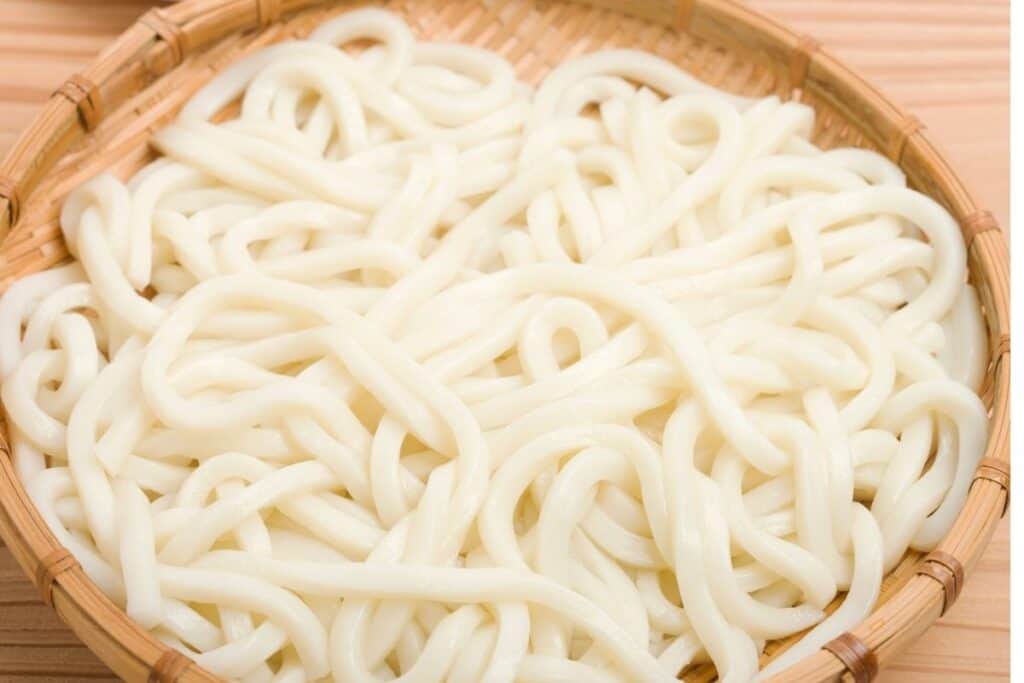
Types of Dishes
The simplicity of the ingredients makes udon noodles easy on the stomach. It also means the broths used for udon are more rich and complex. So, they’re delicious in things like hot or cold soups as well as stir fry dishes that include meats and vegetables.
Purchasing or Making
You can buy these dried, frozen, or fresh. The dried variety comes in varying thicknesses and can be very dense. The fresh or frozen types are best and have optimal texture.
But, anyone can make them. Udon is a simple blend of wheat flour and salted water. The dough sections are cut into long, flat noodles and boiled in hot water.
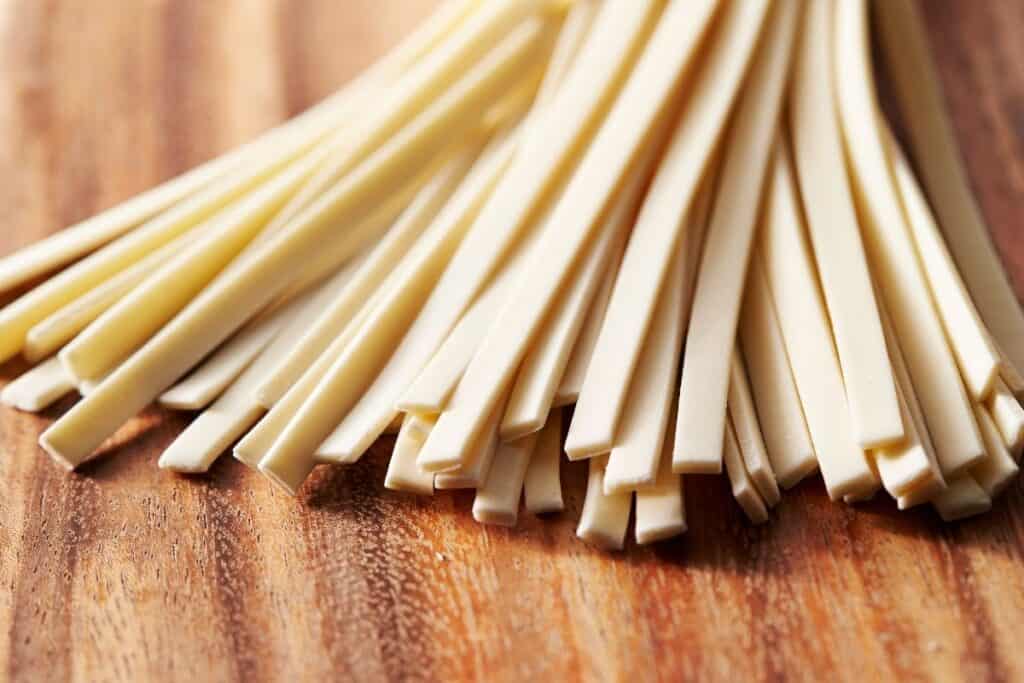
Best Region in Japan for experiencing udon
The Kagawa prefecture is king for udon noodles. They call their dish sanuki udon. It’s a broader noodle with flat edges and an extra chewy texture, which means it collects more of the broth’s flavor.
The city of Kotohira even offers a taxi tour that takes visitors on an udon adventure visiting various prime udon shops.
Soba or Udon throughout Japan
While there are specific places in Japan to enjoy the best quality noodles, various regions around the country prepare them differently.
Therefore, even though some places might be famous for their preparation, others have their own twists that are equally desirable. Almost any restaurant or yatai (street food stall) will sell either of these noodles.
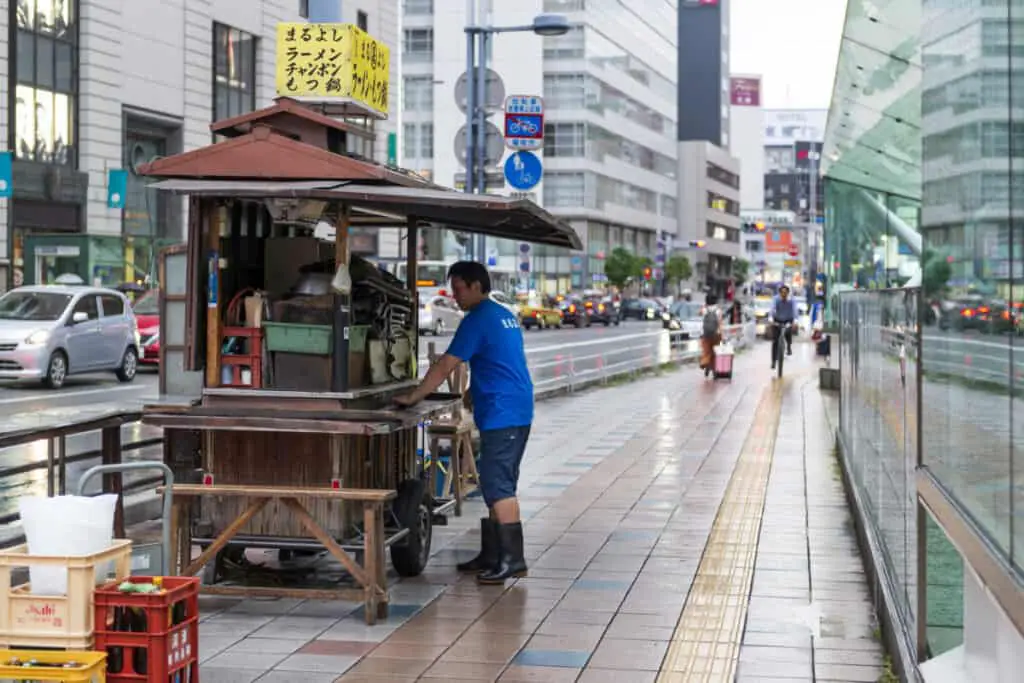
- Zaru-soba or zaru-udon comes served on a knit bamboo platter and dipped in a tsuyu sauce. This is usually in a separate container.
- Kake soba/udon comes in a bowl covered in hot soup.
- Tanuki-soba/udon serves topped with age-tama, or deep fried wheat flour balls.
- Kitsune-soba/udon comes topped with abura-age, or thin-sliced fried tofu with soy sauce and sugar.
- Tempura-soba/udon contains batter-fried vegetables or seafood.
- Curry soba/udon is a popular and refreshing summer dish served in a thick Japanese curry.
- Tororo soba/udon is another fantastic summer dish with grated yam.
- Sanasi soba/udon comes with foraged vegetables.
- Kama-age soba/udon has the noodles blended with raw egg and soy sauce.
How to Eat Udon and Soba Noodles Japanese Style
Depending on the time of year and how the noodles come served, there’s a certain way to eat them. Also, particular toppings, like crunchier options such as tempura, have additional methods for eating. It’s not difficult, but there are some nuances to note.
Cold Noodles are for Summertime
Cold soba and udon noodles are popular in summer, where the dishes available actually help you to cool off. These have seasonings added to the dashi broth, such as ginger and onion.
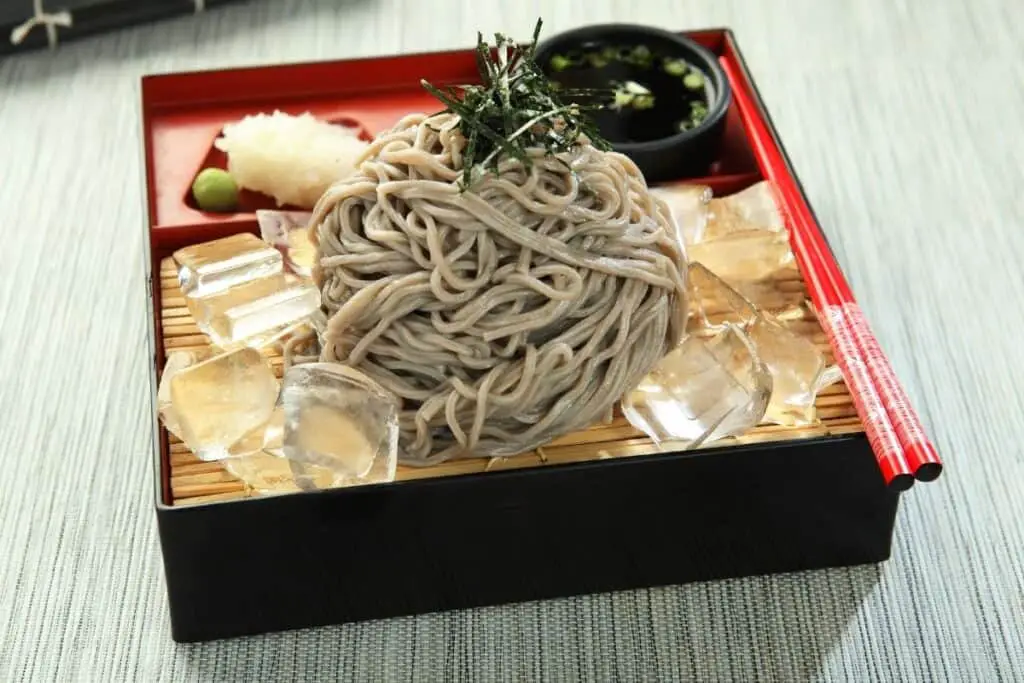
You add the noodles manually into the dashi after seasoning it. Wait a few moments for the broth to thoroughly coat the noodles and they’re ready to eat.
True noodle connoisseurs in Japan will not drench all the noodles at once. They dip them little by little into the broth. Soba noodle water gets added to the tsuyu and is consumed after the meal.
Hot Noodles are Wintertime Comfort Food
When both soba and udon noodles appear in a hot dish, the noodles will already be in the soup. With chopsticks, you grasp the noodles and bring them straight into your mouth.
Don’t turn, wrap or swirl the noodles around the chopsticks like spaghetti or fettuccini.
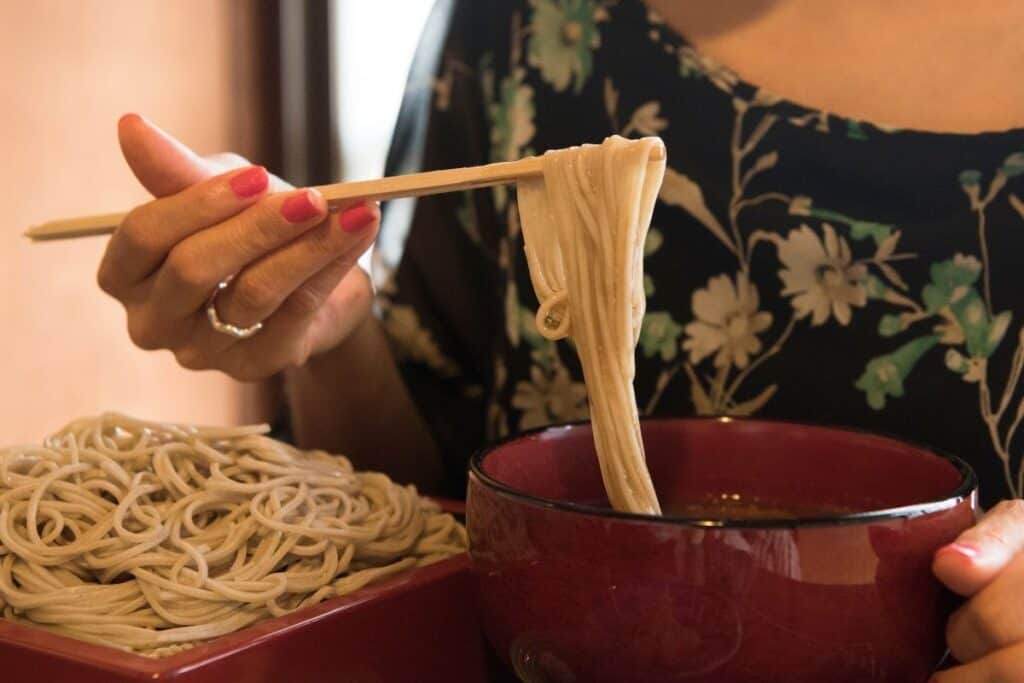
In these particular dishes, add condiments such as spring onions, white and black sesame, and/or shichimi spice. Many restaurants serve these as a side and diners add what they want or don’t want.
Crunchy Toppings like Tempura
Toppings like tempura vegetables or meats offer a crunchy texture contrast with either soba or udon noodles.
When eating tempura soba/udon, you first taste the crunchiness of the deep-fried vegetables or seafood and then dunk it into the broth. This allows you to savor all the flavors and textures of the soup.
Making Noodles In Japan

